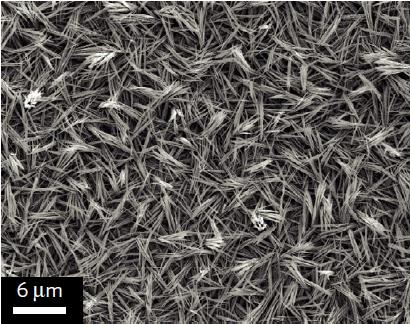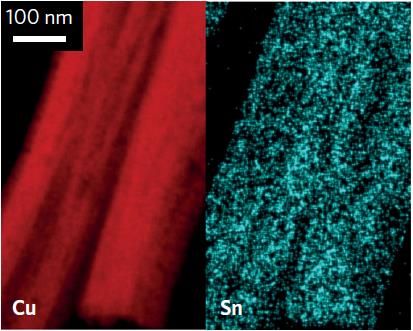
Researchers in Switzerland and Spain have developed a solar-driven electrolyser that converts CO2 to CO using only Earth-abundant elements in place of precious metals. Reducing emissions of CO2 by converting it electrochemically to CO is an attractive prospect due to the potential use of CO as a precursor to fuels and high-value chemicals. The work leads the way to further exploration of Earth-abundant metals that might perform comparably to the rare elements used until now.
The conventional method to convert CO2 to CO uses precious-metal catalysts (gold, silver, palladium) at considerable overpotentials and also requires electrolyte additives. What this research has demonstrated is an innovative, inexpensive and stable alternative using a bifunctional system of SnO2-modified CuO electrodes separated by a bipolar membrane and driven by a solar cell. This newly developed system constitutes a milestone for the catalysis community as it avoids the requirement – until now – of noble metals.
Preparing and testing the electrodes
The team, led by Jingshan Luo and Michael Grätzel of École Polytechnique Fédérale de Lausanne (EPFL), anodized copper films to produce CuO nanowires (figure 1), and then applied an SnO2 coating by atomic-layer deposition (ALD). The synthesized electrodes’ structure and shape were characterized by X-ray diffraction and energy-dispersive spectroscopy (figure 2).

To evaluate the prepared electrodes, the researchers compared the CO selectivity of their SnO2-coated electrodes to the bare CuO equivalents. CO selectivity is a measure of the moles of CO2 converted to CO in relation to the total moles of all products. The unmodified electrodes achieved a 36% CO selectivity, while the new, surface-modified, electrodes reached 97%.
The spent electrodes exhibit copper in a metallic state coexisting with metastable tin and copper oxides. The researchers attribute the presence of these metastable oxides to enhanced CO2 reduction activity. Still, further work is needed to fully address this issue under electrochemical conditions.
Understanding how they work
The group measured the evolution rates of H2 and CO at their respective current densities. At higher overpotentials, the unmodified samples primarily yielded hydrogen and other carbon-containing products, but this was inhibited by SnO2addition. Thus, the boost in CO selectivity for the modified electrodes was shown to be due to the suppression of hydrogen production.

Gas adsorption experiments showed that the binding strength of both CO and adsorbed hydrogen was substantially decreased with the SnO2-coated electrodes. The lower hydrogen availability restrains the reduction of CO to alcohols and hydrocarbons while CO’s weaker binding strength on copper is comparable to that exhibited for noble metals like gold and silver. The results from this experiment and the electrochemical tests suggest that SnO2 and CuO are working cooperatively.
Constructing the bifunctional solar-driven device for CO2reduction
A complete electrochemical system needs a cathode for CO2reduction, an anode for water oxidation, and a membrane for product separation. Grätzel and collaborators used the same cathode composition of SnO2-coated CuO to build the anode. Gas chromatography measurements confirmed oxygen production with no sign of anode corrosion, proving that SnO2-coated CuO electrodes can be used for both CO2 reduction and electrochemical oxidation of water.
The remaining challenge the researchers addressed was that each reaction requires an environment with a different pH. To solve this problem, the scientists utilized a bipolar membrane consisting of an anion exchanger on the anode side and a cation exchanger on the cathode side, allowing the use of a different electrolyte solution in each compartment. Finally, the solar-driven device was completed using a single three-junction GaInP/GaInAs/Ge photovoltaic (PV) cell, seen in figure 3. This was tested with simulated sunlight at room temperature, and achieved a solar-to-CO free-energy conversion efficiency of up to 13.4%.
There is no doubt that Grätzel and colleagues have constructed a novel, bifunctional and cost-efficient device for catalytic conversion for energy applications. This work will lead to new ways to alter the surfaces of plentiful and inexpensive elements in order to reach catalytic activities that rival or even surpass those of the noble metals.
Full details of the work can be found in Nature Energy.



